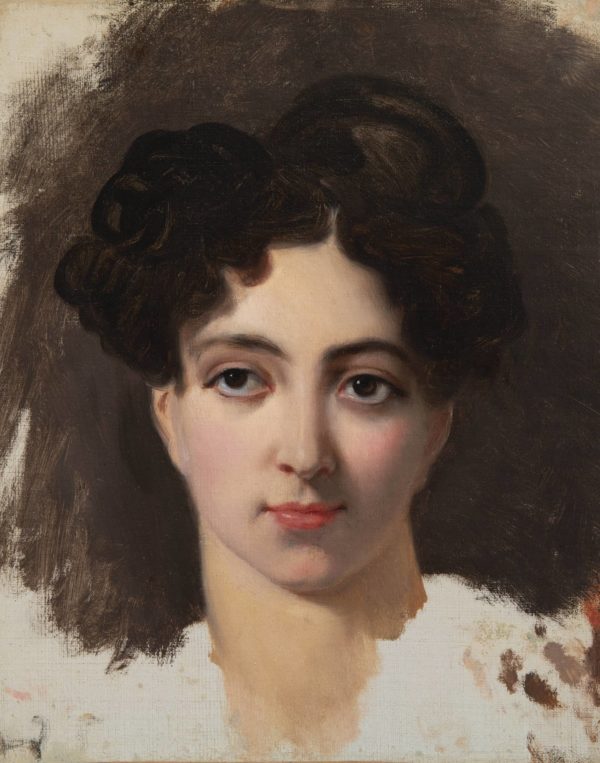Portrait of the Actress Mademoiselle Mars, 1815-1820
Oil on canvas, H. 0.41 m; W. 0.33 m
Traces of several lables on the back of the frame: Exposition universelle de 1900 / Exposition rétrospective (…) / M André [Delaroche-Vernet]; two handwritten labels: Mademoiselle M [ars]; 122.
Provenance: André Delaroche-Vernet (in 1900)
Private collection, France
Exposition universelle de 1900. Exposition Rétrospective de la Ville de Paris, Paris, 1900, p. 43, no. 307 (Collection of André Delaroche-Vernet).
Armand Dayot, Les Vernet: Joseph, Carle, Horace, Paris, 1898, p. 117 (ill.) and p. 162.
Horace Vernet, a painter of military scenes and portraits, was born into a family of famous artists. His grandfather, Joseph, was the marine painter supported by Louis XV, while his father Carle, initially a follower of the neoclassical school, specialised in battle scenes. The Napoleonic wars had a major influence on his painting. An enthusiastic defender of the Empire, Horace Vernet became the preferred illustrator of Napoleon’s life. Later on, he would paint the portrait of Charles X which was widely appreciated.
After having been the director of the French Academy in Rome, Vernet returned to France in 1853, where a major project awaited him: King Louis-Philippe commissioned him to paint the entire ‘Gallery of Versailles’ depicting the African campaign. The work took three years. He was the official painter to several successive governments and he finished his career as official painter of the Second Empire.
Anne-Françoise-Hippolyte Boutet, known as Mademoiselle Mars (1779-1847), was a famous actress. She joined the troupe of the Comédie Française in 1799 and established a fabulous reputation in classical roles from the plays of Molière, Marivaux, Sedaire and Beaumarchais. She fascinated her audience with her beautiful brown eyes, her graceful smile and the beauty of her low, husky voice. The Emperor received her and expressed his admiration for her.

